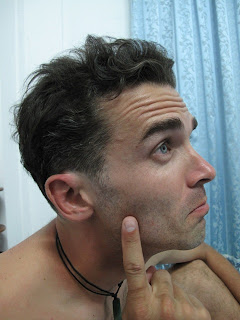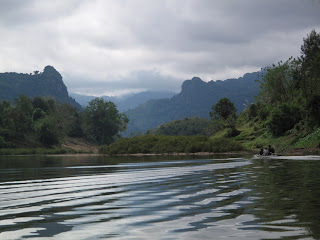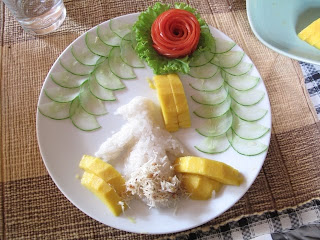Deciding what you’re going to wear is probably the most difficult part of packing.
Not only is it dependent on your personal style and interests, but also on where you’re going, when you’ll be there, how long you’ll be there for and what you plan on doing.
Someone doing a weekend trip to New York City to check out the night life is going to bring a very different wardrobe than someone doing a month-long trip in South America to hike the Inca Trail.
Since we’re going for a year and plan on visiting a number of different areas, we really tried to bring clothes that combined both function and style. When we’re in more rugged areas, we need clothes that can handle the elements, ie. rain, wind, mud, mosquitoes. But when we’re in metropolitan areas, we don’t want to look like we just walked out of the jungle, ie. 2-in-1 convertible pants/shorts = a really bad idea.
And on top of that, you need to consider the local taboos – is there an expectation of you by the community you’re visiting? Travelling through the Middle East is very different than travelling through Australia.
I can’t tell you what to bring, but hopefully I can give you a few things to think about. Here’s a list of everything we brought to wear, along with a few “whys”…
Bathing Suit:2 each… bikinis for Robyn, surf shorts for me.
A plea for the guys out there…
PLEASE DON’T WEAR SPEEDOS!!!
Unless you’re swimming in a competitive race – which you’re not – there’s no justifiable reason for you to expose yourself to the world in that way.
Rashy:1 each.
They’re great for protection from the sun. And they kinda make you look like a surfer which is, like, totally gnarly dude.
Toque & Gloves:1 Toque & 1 pair of Fleece Gloves, each.
I know SE Asia may not seem like a place where you will get cold, but when you’re riding in the back of a pick-up for 2 hours going 60kmph down a highway, it is.
Plus we’re Canadian… we’re required by law to bring a toque with us wherever we go.
Sandals:1 pair, each.
I prefer sport sandals to leather sandals. They give great support, they’re more comfortable when you’re doing lots of walking and if you’re caught in a sudden shower during rainy season, they dry out faster and won’t stretch. Plus they give you really cool tan-lines.
The downside though is after a while, they stink… I don’t care if your feet are made of rose petals and you sweat perfume, after 3 months of wearing sport sandals, your feet will REEK!!!
Robyn also brought a pair of fancier sandals for when we go out… I can get away with a pair of Tevas, but sport sandals don’t work with a nice dress.
Hiking / Running Shoes:1 pair, each.
We each brought approach shoes because they’re very versatile. They have the traction & support of a hiking shoe and can handle the wear & tear of being on the road. But they’re a little more stylized than running shoes or hiking boots, so we can wear them with trousers or jeans and not look ridiculous.
Sunhat / Ballcap:1 each.
I brought a baseball cap and Robyn brought a “Gilligan hat”… but then she ended up buying a nice baseball-type hat along the way.
I’m not quite sure where I stand on the “Tilley” hat debate:
One side of me thinks no self-respecting person under the age of 40 should wear one.
But the other side of me knows they give good sun protection and they can survive the digestive system of an elephant, which is pretty badass.
So I’ll leave it up to you whether you bring one or not.
Underwear:10 pairs, each.
DON’T SKIMP ON UNDERWEAR!!!
If you’re gone for under a week, bring 1 pair for every day you’re away and then 1 extra pair.
If you’re gone for over a week, bring at least 10 pairs.
Reusing underwear is gross.
“Oh but Eric, you don’t understand… these are specially designed, quick-dry, sweat-proof underwear – you can just rinse them out and wear them the next day.”
Oh but you know what?
Still gross.
I’ll wear shirts & shorts a couple days in a row, but I don’t like dirty fabric touching my special bits.
Socks:4 pairs, each – 2 pairs of Merino wool socks and 2 pairs of running socks.
You’ll need them to wear with your shoes, but you’ll also need them for cold nights in uncarpeted rooms.
Shirts:4 T-shirts for me; 3 T-Shirts & 2 Tank Tops for Robyn.
I tried to bring a mix of cotton T’s and those made out of dry-weave fabric because when you’re lugging your backpack around in the heat, cotton T’s make your sweat more obvious and are harder to dry & clean out. Dry-weave shirts breathe better and can easily be rinsed in a sink and hung out to dry.
Plus, one of the beauties of T-Shirts is you can get them anywhere… in shopping centers, markets, on the street, whatever. So if you happen to spill red wine all over one and you need a replacement, it’s easy to do. Just be sure to check the size… “L” in North America is very different than “L” in Vietnam.
But remember this – the same rules apply for travelling as they do for concerts… you wouldn’t wear a “Rolling Stones 2010 Tour” shirt when you’re at a “Rolling Stones 2010 Tour” show, so don’t wear an “I Love Thailand” shirt while you’re strolling down the streets of Bangkok… it’s just bad form.
Long Sleeve Shirt:1 each.
These are good to have for when it cools down a little bit… like when the bus driver keeps the A/C cranked during your 8-hour journey.
Yeah, you could ask him to turn it down, but he’s probably doing it to stay awake… you pick.
I recommend bringing ones made of a dry-weave material because they’re just a little more versatile. I brought the “Shift Long-Sleeve” from Beta Clothing and it totally kicks ass. It’s light & breathable and keeps me warm, and it looks at home both hiking a rainforest in Borneo and walking the streets of Singapore.
www.betaclothing.ca
Sweater / Jumper:1 each.
Gawd bless the inventor of “Polar Fleece” – it’s light, it’s durable and it stays warm even when it gets wet. It’s perfect to use as a blanket on a sleeper bus, as a pillow on a train or as a seat cushion on a wooden boat.
And you can wear it too!
Rain Jacket:1 each.
Two words… “Monsoon Season.”
Shorts:2 pairs, each.
It’s good to bring a mix of shorts… casual shorts for everyday use and sport shorts for hiking or an impromptu game of pick-up soccer.
I just brought casual shorts because I’m able to use my bathing suits as sport shorts … can’t do that with a Speedo, can you?
Trousers / Pants:1 pair, each.
It doesn’t matter how hot a place you’re visiting, always bring at least one pair of long-pants.
To start, you’ll need them to enter most temples, mosques and churches, as well as some government buildings. Plus if you wear them on the plane, it increases your chance of getting a seat upgrade.
I brought casual pants and not blue jeans. Blue jeans are heavier, harder to dry if they get wet and really bad at keeping you warm.
Pajamas:1 pair, each.
If you’re going to be in shared or dorm-style accommodations, don’t sleep in the nude. This just makes for awkward moments in the morning. And even if you’re not planning on doing “the dorm thang”, keep in mind there’s usually one rogue mosquito that’s able to get through the net.
Belt:This is more for fashion reasons… if you’re not wearing a belt, you’re not fully dressed.
Flip-Flops / Shower Shoes:Also known as “thongs” in Australia, they’re great for wearing on a casual wander, a trip to the beach or in a really gross shower… I don’t know if hoof & mouth disease is contagious in humans, but why take the risk?
We forgot to bring them with us, but we picked up a couple of cheap pairs along the way.
Scarf:1 Scarf, for Robyn; 0 for me.
For women, these are great because it’s a simple way of covering your shoulders when visiting a temple or a mosque. But they’re also good for keeping sand and dust out of your face when you’re in the back of an open-air vehicle.
I didn’t pack one but you’re damned sure I’ll be getting one before we get to Egypt.
Extras:Robyn also brought a dress, a couple of skirts, a sports bra and a regular bra.
I brought none of these.




























































